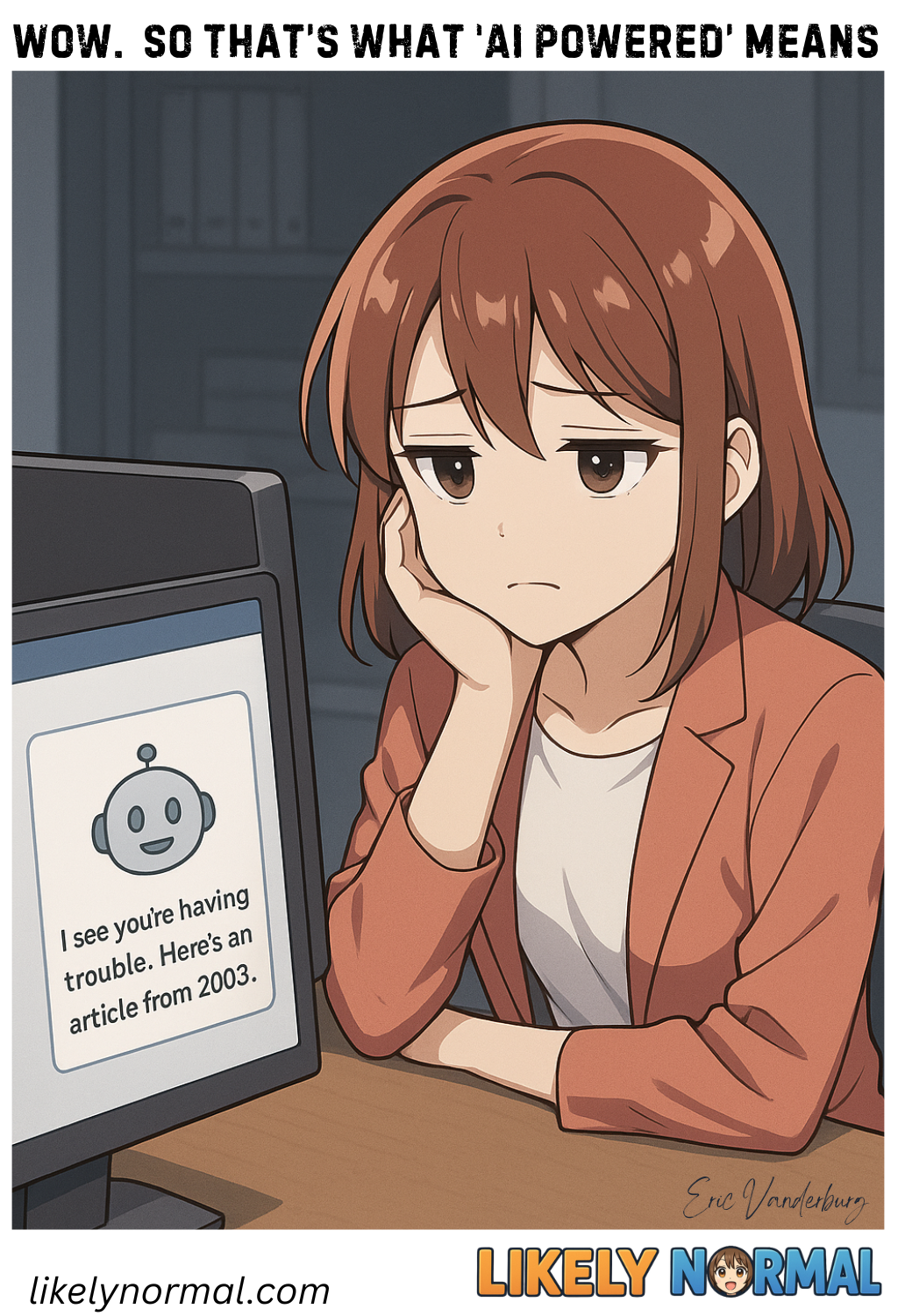AI-Powered
There’s nothing quite like the frustration of interacting with an AI help system that’s about as useful as a chocolate teapot. You approach it with hope, typing out your carefully worded question, only to be met with the digital equivalent of a blank stare. The bot’s first move? Suggesting you check the FAQ page – the same FAQ you’ve already scoured that contains exactly three unhelpful bullet points written in 2014. When you clarify your question, the system responds with eerie confidence, offering a “solution” pulled from an ancient knowledge base article that references software versions discontinued before TikTok existed.
The real comedy begins when the AI, having exhausted its two pre-programmed responses, suddenly develops selective hearing. Ask about a billing issue, and it’ll enthusiastically explain how to change your desktop background. Inquire about an error code, and you’ll get a cheerful “I’m sorry you’re having trouble!” followed by a link to a community forum where seven years ago someone posted “never mind, I figured it out” with no actual solution. The pièce de résistance? When the bot finally admits defeat and offers to connect you to a human agent – after making you retype your issue three times – only to put you in a queue behind 200 equally frustrated customers.
These systems represent a perfect storm of corporate cost-cutting and technological hubris, where companies brag about their “AI-powered assistance” while providing a customer experience roughly on par with shouting your credit card number into a tin can. The only thing more impressive than their ability to misunderstand simple questions is their remarkable consistency – you can count on them to be unhelpful in exactly the same way every single time. After a few rounds with these digital “helpers,” you start to suspect they were programmed by someone who deeply hates humanity and is slowly exacting revenge through deliberately obtuse chatbot interactions.
At the end of the day, we keep using these systems not because they work, but because we’re all trapped in some bizarre technological sunk cost fallacy where we think “maybe this time will be different.” Spoiler alert: It won’t be. The real solution? Learning to fix your own problems through frantic Googling while muttering “I hate technology” under your breath – the true universal customer support experience of our age.

Discussion ¬